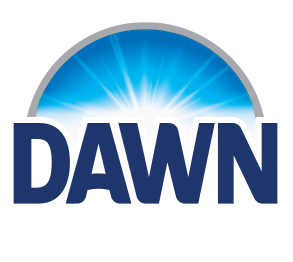How to Clean Baby Bottles
We know babies require a lot of stuff. And by a lot, we mean, a lot! All of those bottles, bottle parts, nipples, pacifiers, and sippy cups need to be cleaned. Over and over. Day after day. Here’s everything you need to know on how to clean baby bottles and parts, so you can worry less about all the “stuff” and spend more time with your little duckling!
How to Hand Wash Baby Bottles
It can seem daunting to have to hand wash your baby bottles, nipples, caps, and sippy cups after every use, but with the right steps you’ll find that scrubbing right away isn’t always necessary. So, you can pay more attention to tummy time and less on cleaning.
Here’s how to wash baby items by hand:
1. Things You’ll Need.
In addition to a sponge, we recommend purchasing a dedicated bottle brush with a nipple brush to clean all the hard-to-reach spots inside your baby’s bottles. For a gentle clean that’s free of dyes, use Dawn® Free and Clear.
2. Rinse Directly After Use.
As soon as you have finished feeding your baby, give your bottle a quick rinse with warm water, just to get rid of most leftover residue. You can come back to thoroughly wash a full day’s worth of bottles when you have more time.
3. Fill A Bowl with Hot Soapy Water.
Apply a squirt of Dawn® to a bowl of hot water. Dawn® works great for cleaning baby items because it does not leave a soapy residue on bottles when rinsed appropriately.
4. Separate the Bottle Parts.
It’s important to take apart every part of the bottle. Old milk can build up between the bottle, the ring, and the nipple.
5. Wash Bottle Parts Separately.
Place all of the bottle parts into hot, soapy water and wash them individually. Use a soapy bottle brush for the bottle and the nipple brush for the plastic nipples and rings. Next, gently squeeze soapy water through the nipple hole to flush out any trapped milk.
6. Rinse Bottle and Bottle Parts.
Rinse off the bottle and bottle parts thoroughly under running water to remove any remaining soap residue.
7. Dry Bottles and Attachments.
Place bottles and nipples upside down in the dish rack to dry. Your baby items are now clean and ready for another feeding. Prepare to do this several hundred more times, even in your sleep.
Handwashing Versus Dishwashing Baby Bottles
Baby bottles can pile up, especially with a newborn! It’s recommended to wash baby bottles after each use, especially during the infancy stage—but don’t worry! You do have a few options when it comes to protecting all those bottles from messes, so you can be more confident with every feeding. You can wash baby bottles and attachments in the dishwasher every few days, but make sure they’re dishwasher-safe before running the cycle. *
To clean baby bottles in the dishwasher:
Rinse baby bottles, nipples, caps, sippy cups and other attachments with warm water
Soak with warm water and a gentle dish soap like Dawn® Free and Clear, which is free of dyes
Rinse off bottles and attachments with warm water
Load into the top rack of your dishwasher
Set to a hot water washing cycle and heated drying cycle
Remove from dishwasher and place on a clean surface or baby bottle drying rack
In cases where your baby bottles aren’t dishwasher safe or your dishwasher is full, handwashing is also a great go-to when it comes to keeping bottles clean and safe for your little bundle.
How to Sterilize Baby Bottles
You’ll also want to consider using a baby bottle sterilizer during the early days. Sterilizing baby bottles and attachments helps remove germs and bacteria—especially if your little duckling is primarily bottle fed. If you’re using a bottle for the first time, you should always hand wash and sterilize it before giving it to baby. This helps ensure you’re starting off with a clean and sanitary bottle, every time.
Allow the baby bottle and parts to soak in warm, soapy water
Rinse off with warm water
Place in baby bottle sterilizer and follow the instructions provided for your particular brand of sterilizer
Once complete, store on a clean drying rack before use
You can also sterilize your baby bottles by placing them in boiling water—but be careful to not damage the nipple or any other attachments.
Can I Reuse My Old Baby Bottles?
When kept in good condition and thoroughly washed, you may be able to reuse your baby bottles with your next baby. However, it’s best to get new bottle attachments, such as nipples, as these can undergo wear and tear over time. Whether new or used, always be sure to soak your baby bottles in warm, soapy water and sterilize before using.
Best Dish Soap for Baby Bottles
When it comes to ensuring your baby is getting the best, we understand that same notion extends to the dish soap you use as well. Here are our recommendations for top dishwashing liquids to use when cleaning baby bottles, bottle attachments, and first utensils:
For Soaking: Before sterilizing or running your baby’s bottles through a dishwasher, use a foaming dish soap like Dawn® Platinum Dishwashing Foam. Just one pump creates more than enough soapy foam to penetrate leftover formula and milk residue.
For Everyday Handwashing: Dawn® Free & Clear is powerful enough to tackle any leftover messes, including baby food and milk residue, and gentle enough to use on delicate items, while also being free of dyes and phosphates.
With Dawn® dish soap it’s So Dawn Easy to keep all your baby items clean, so you can feel more confident when feeding your cooing little duckling!



